Science Says Eat More Beans
10:01 minutes
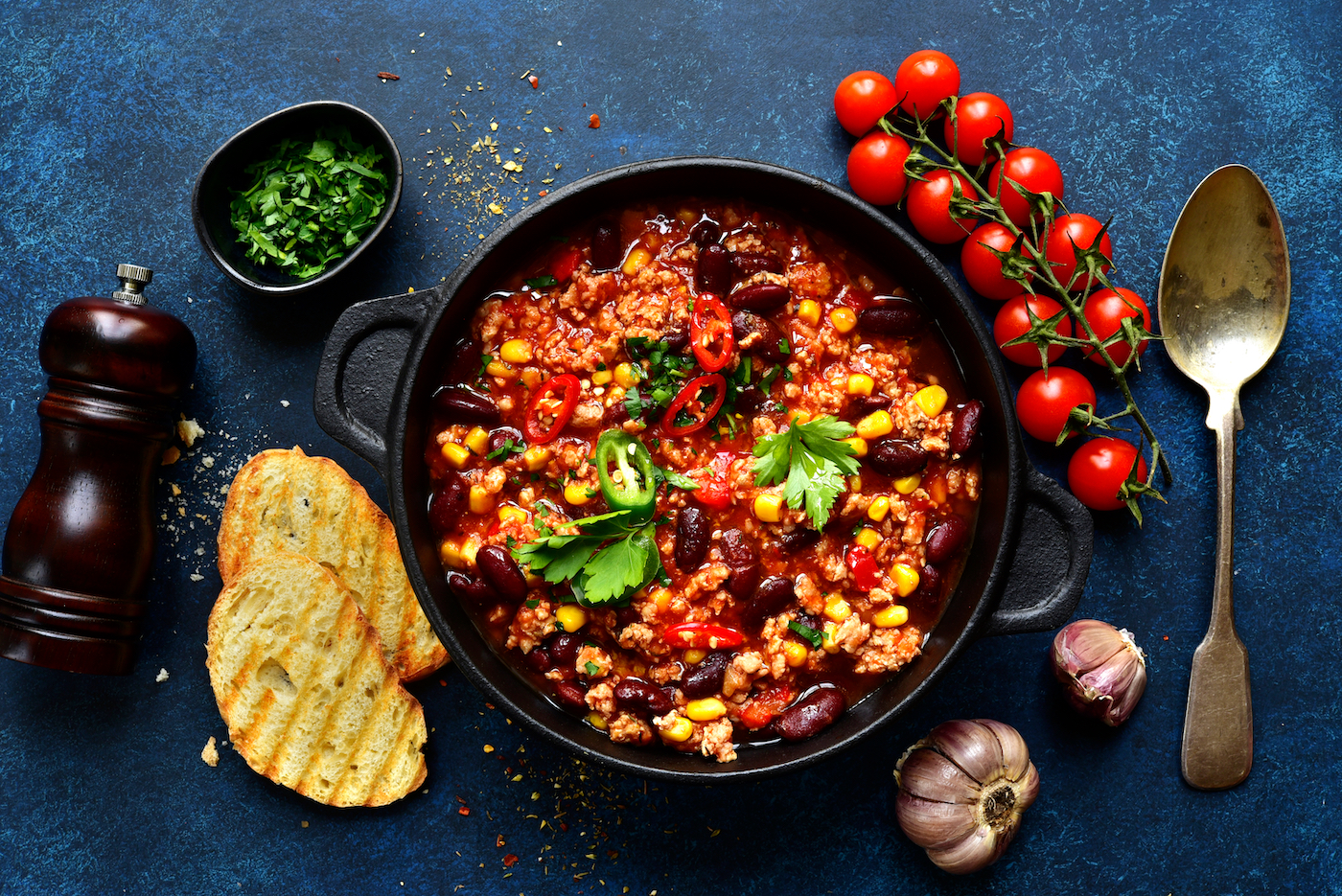
Beans are delicious, high in protein, inexpensive, efficient to grow, and an absolute staple in so many cuisines. So why don’t Americans eat more of them? The average American eats 7.5 pounds of beans annually, which is only a few cans of beans every year.
The answer is complicated, but one thing is sure: Beans have a PR problem. Ira talks with Julieta Cardenas, a Future Perfect Fellow at Vox, who reported this story.
If you’re looking to chef it up, here are some of the SciFri staff’s favorite bean recipes.
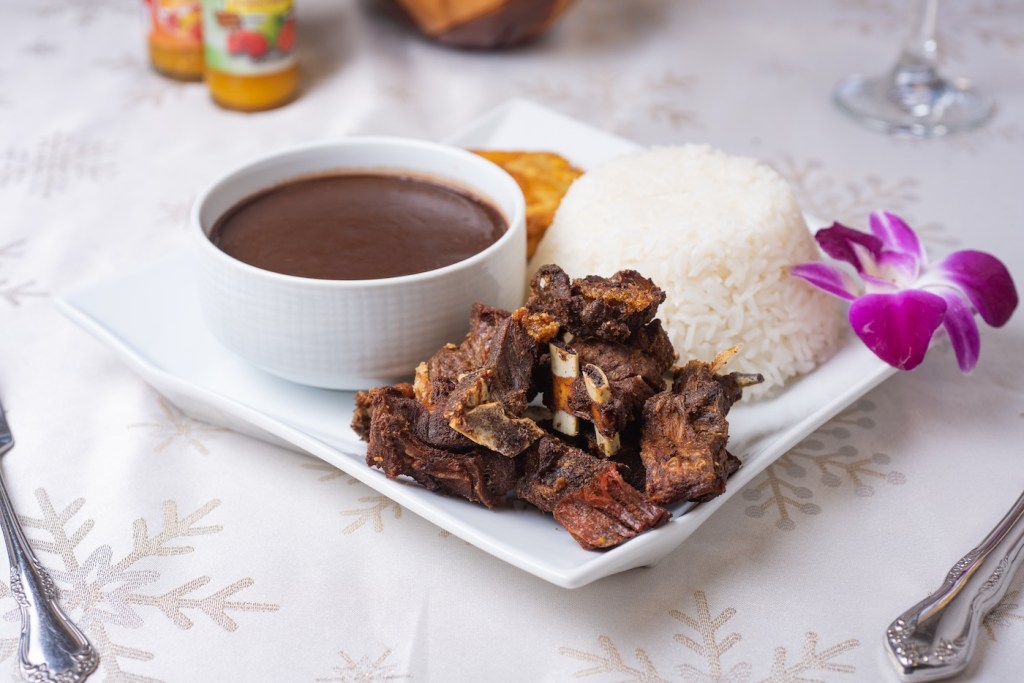
Stewardship Manager Stanley Delva graciously shared his family’s Haitian beans recipe, just in time for Haitian Flag Day! This recipe can be made with any type of bean, but the more common bean types for it are black or red beans.
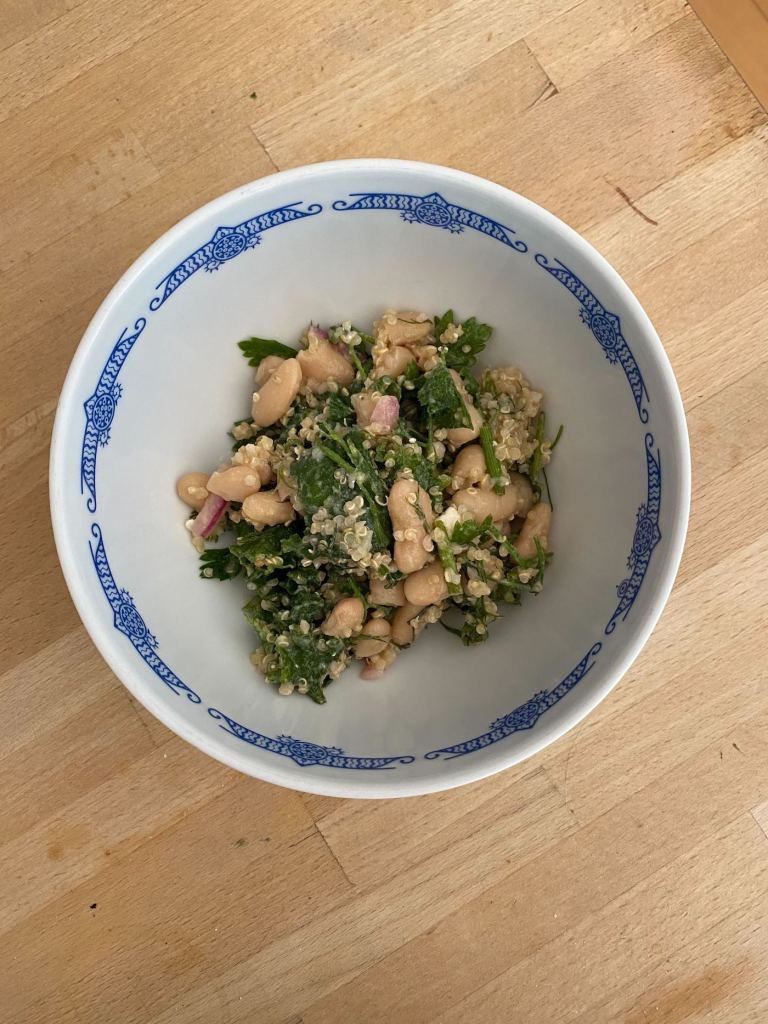
Radio producer Kathleen Davis calls her recipe ‘bean meal.’ She says, “I like bean meal because it’s easy, filling, and healthy! It’s perfect for days where it’s too hot to turn on the stove, or if I’m too lazy to make anything complicated.”
To give Davis’ recipe a try:
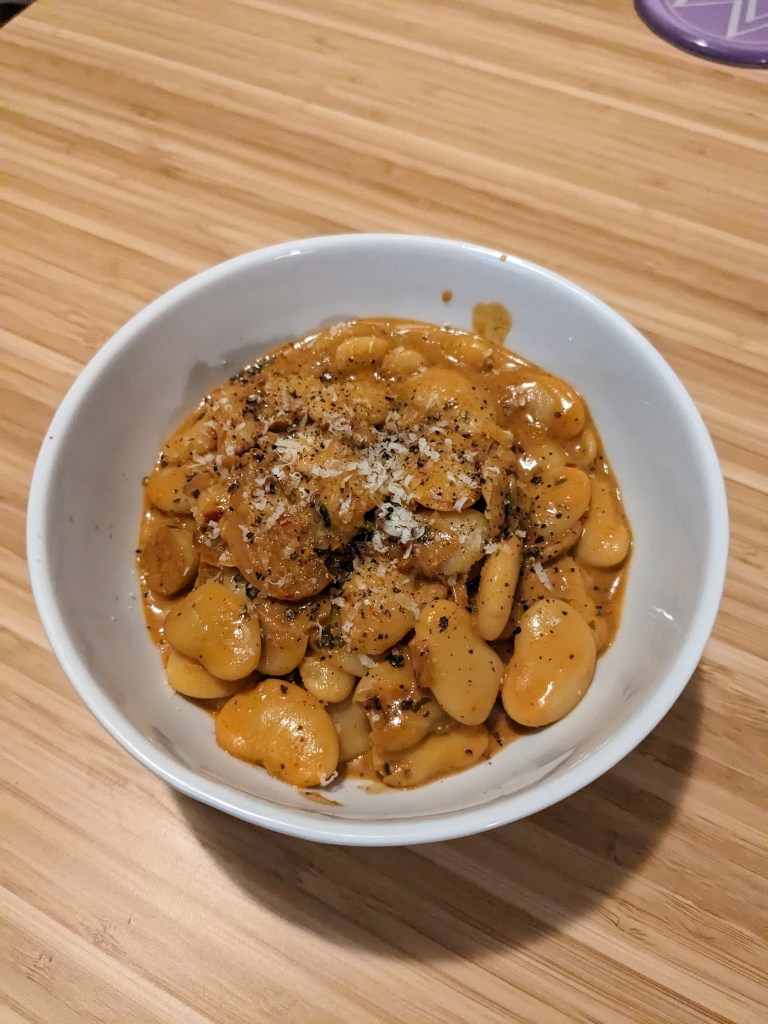
Digital producer Emma Gometz loves her recipe, vodka sauce butter beans, inspired by this video. “This recipe came to me in a dark, sauceless time. Now, when it comes to sauce, I want for nothing. This is one of the three recipes in my life I have completely memorized,” she says.
Here’s how to make it:
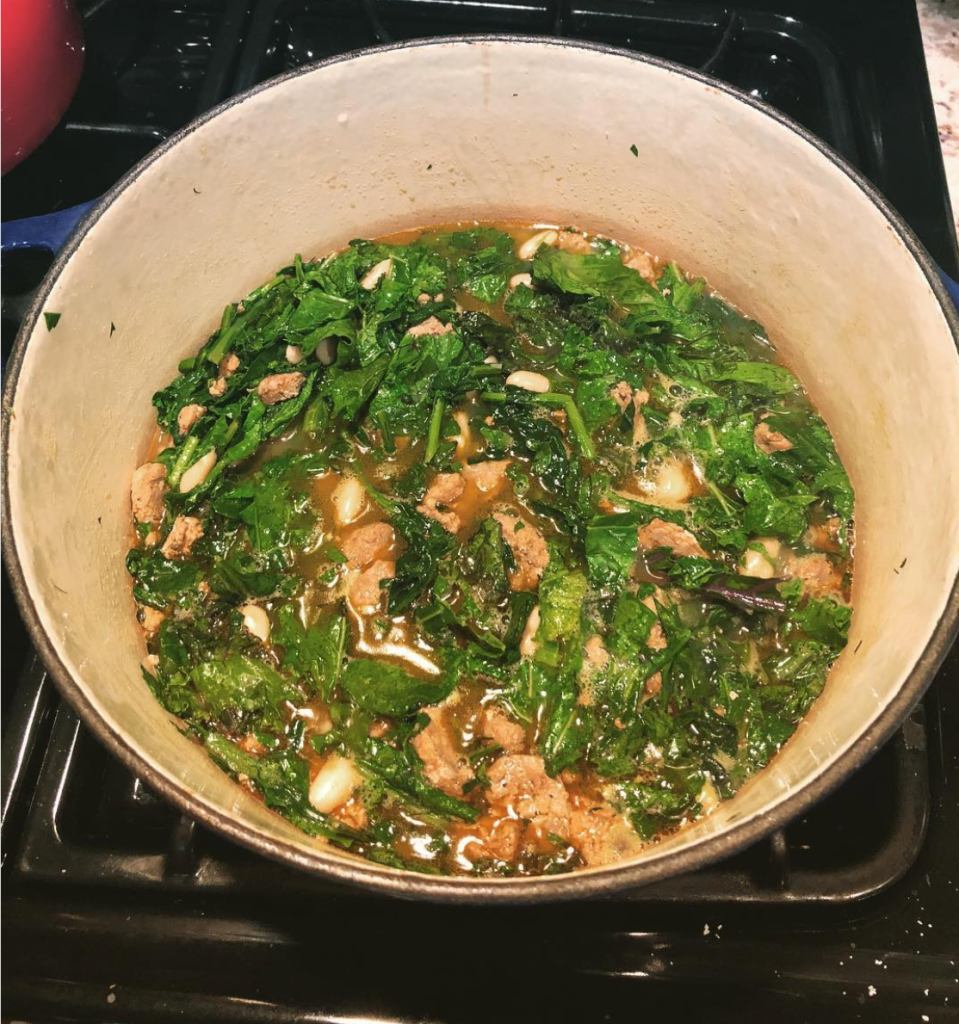
John Dankosky, our director of news and audio, and occasional guest host, recommends his recipe for white beans with broccoli rabe. “My very favorite bean ‘recipe’ isn’t really a recipe as much as a sketch…an idea…of one of the very best pairings for beans you’ll find,” he says. “It’s a go-to anytime of the year, and easy to make for a crowd. Broccoli rabe is famously bitter, but that’s the point. It’s a perfect counterpart to the mild, creamy white bean. I suppose you could use broccolini or broccoli, but it won’t really be the same. At the end of the day, the best part about this dish is how the beans kind of break down, and create a starchy sauce.”
His recipe serves two to four people, and it goes like this:
And if you want to jazz up this recipe, John says:
Julieta Cardenas is a Future Perfect Fellow at Vox, based in New York, New York.
IRA FLATOW: This is Science Friday. I’m Ira Flatow. This hour, we’re talking beads, bears, bees, and butterflies. We’ll hear what’s abuzz with bee and butterfly biology but first, the case for why we should eat more beans. I mean, they are delicious, they’re high in protein, efficient to grow and inexpensive, and they’re an absolute staple in so many cuisines. But yet the average American eats just 7 and 1/2 pounds of beans annually. That’s only a few cans of beans every year.
So why don’t Americans eat more of them? Joining me now to talk about why the US is behind on beans is Julieta Cardenas, a Future Perfect fellow at Vox who reported this story. Julieta is based in New York City. Welcome to Science Friday.
JULIETA CARDENAS: Hi, Ira. Thanks for having me on.
IRA FLATOW: So nice to have. Let’s start out with the basics of just what a bean is biologically speaking. I think people get them confused.
JULIETA CARDENAS: Sure. So a bean is a pulse, and a pulse is a subfamily of legumes. Pulses are the edible seed of a legume, and they include lentils, peas, and beans. Soy beans are also a legume, but they’re not a pulse. They’re an oil seed. That’s because the soybean is higher in fat whereas pulses are low in fat.
IRA FLATOW: All right. I get it there. Now environmentally speaking, when you’re planting beans, why are being such a good choice to plant?
JULIETA CARDENAS: Sure. So beans make a lot of sense as a climate mitigation strategy, and they’ll also help make global nutrition more accessible. And there’s a few reasons why. First is that they use a lot less land to grow a good amount of protein. So 23% of agricultural land is used to grow plants, and from that we get 63% of global protein.
On the other hand, livestock uses 77% of agricultural land but only provides 37% of global protein. So in terms of land use, plants including beans are way more efficient.
Beans are also adaptable to growing in different conditions, so you can grow them in drier soils. So they’re a good choice in terms of water use as well.
And the second thing is beans are helpful in making soil healthy. They’re nitrogen fixing, which means the roots of legumes work in partnership with bacteria in the soil, and they end up leaving some of this nitrogen in the soil, which acts like a natural fertilizer. So when you grow beans in rotation with other crops, over time you’re improving the soil health and helping all your crops grow.
IRA FLATOW: So that’s why the Indigenous way of growing with the three sisters– beans, corns, squash– works so well.
JULIETA CARDENAS: Exactly. They all help each other out, and it’s called milpa in Spanish.
IRA FLATOW: So what is the most grown bean in the US?
JULIETA CARDENAS: So the most grown bean in the US is– well, it’s an oilseed, but soybeans are the most grown. And we grow a lot of soybeans, but we’re feeding them to livestock animals. So when a livestock animal like a cow eats soy, they have to metabolize what they’re eating. So up to 96% of the protein that they’re getting from eating soy is lost through their natural metabolic processes, so they poop out a lot of the protein.
IRA FLATOW: I mean, instead of us eating it, yeah, we don’t get it from them. That makes a lot of sense. There’s been a great controversy over the years about farmers not actually owning the seeds they plant because seed companies like Monsanto and Bayer, they retain the rights to their own seeds. Tell us about how that works.
JULIETA CARDENAS: So before the 1980s, seeds were open for use. They were in the public domain, but then there were some changes to intellectual property law and that made it possible for companies to create new seeds and create patents for these seeds. The effect this ends up having is that the seeds become more expensive. They can end up costing twice as much, and it also means that big seed companies, they can go after farmers if these farmers are growing proprietary crops.
IRA FLATOW: Yeah. And how does that affect what ends up on our plates?
JULIETA CARDENAS: So because these seed companies want their seeds to be competitive and to be grown a lot and to produce a lot of yield, there’s not a lot of incentive for them to have a wide variety of beans. So we all end up eating the same kind of beans, and in the US, that would be a lot of pinto beans, which are delicious but there’s more beans that we could be eating.
IRA FLATOW: That’s very interesting. As I mentioned earlier, the average American eats less– I found this hard to believe– eats less than eight pounds of beans a year. I mean, how does that compare to other countries?
JULIETA CARDENAS: We’re definitely not number one when it comes to being eating. So Rwanda and Burundi are number one for eating beans, and in Rwanda and Burundi, people eat around 130 pounds of beans per year. In the US, we only eat around 7 and 1/2 pounds of beans per year. In Mexico, the number used to be higher, but now people are eating around 20 pounds of beans per year. So in the US, we definitely could play catch up–
IRA FLATOW: Yeah, yeah.
JULIETA CARDENAS: Yeah, to make beans more of a mainstay.
IRA FLATOW: And why is that? Why do we eat so little beans compared to other places?
JULIETA CARDENAS: Well, in the US, there’s a few cultural reasons that are holding people back from eating beans. One is people are probably intimidated because they don’t know how to prepare them. They might be under the impression that you have to soak beans, and no one has time for that. But the good news is you can just cook them, and if you have a pressure cooker, it’s all the better it’s all the easier.
The other factor that comes into play is that people associate beans with struggle. During the early onset of COVID-19, bean purchasing shot up 400%. So everyone was rushing to stock their pantries with beans just in case, just to be prepared, but people don’t necessarily want to associate struggle with the meals that they’re making now. So beans have to overcome this little PR hurdle.
IRA FLATOW: Yeah.
JULIETA CARDENAS: That’s where there’s room for creativity from bean companies to make beans more of a hero of a dish.
IRA FLATOW: Yeah, because beans are treated like they’re a second-class food, right?
JULIETA CARDENAS: Yeah, definitely. And people might feel like getting a can of beans is a culinary no go. There’s– but I eat a lot of canned beans, and there’s a lot of–
IRA FLATOW: Yeah, I do, too.
JULIETA CARDENAS: There’s a lot of potential there.
IRA FLATOW: Yeah. Let me go back to that old saying about beans, beans, beans they’re good for your heart, and the more you eat them– I’m not going to go there with the rest of it. So I assume that’s also a reason why a lot of people stay away from it because they’re gassy. What makes them so gassy?
JULIETA CARDENAS: So what makes them gassy is that people are not used to eating an adequate amount of fiber, and so when you eat fibrous food, you may pass wind. But once your body gets used to having an adequate amount of fiber, that hopefully won’t keep happening.
IRA FLATOW: Yeah. And I understand this fear of beans and gassiness this goes way back a long time, doesn’t it?
JULIETA CARDENAS: Definitely. Pythagoras, famous for his triangles, was afraid of beans. He and his followers thought beans contained human souls and that eating them would be a kind of cannibalism. And this might have been because Pythagoras thought beans, in his case fava beans because that was what was there, looked like little fetuses. And there’s also the fact that in ancient Greece, wind and souls were related concepts, so he thought eating beans and passing gas was like the soul leaving the body.
IRA FLATOW: Oh, I can’t– that’s amazing. This was a smart guy, but those were different times.
JULIETA CARDENAS: Yeah, those were different times. But then you have Diogenes, the cynic, who did not care for social pleasantries, and he ate a lot of beans, especially lupin beans. And he did this because lupin beans were seen as a food of the underclass, and he wanted to be hardcore. And the fact that they’re the musical fruit was also a plus for him because if he could offend some normies, then he would. He would take that chance. And so you could be like Diogenes if you want.
IRA FLATOW: I have no fear, no fear.
JULIETA CARDENAS: No fear.
IRA FLATOW: Well, it’s something now I’ll remember Pythagoras about for a different reason. I mean– and beans, of course, as you’re saying, they have a PR problem. Is there a way we can get over that? I mean, is there anybody working on that?
JULIETA CARDENAS: Yeah. So we definitely should try to get over this PR problem, and there’s non-profits like Beans Is How, which is trying to double bean consumption by 2028. And Beans Is How is guided by the UN development goal of ending hunger, achieving food security, and promoting sustainable agriculture. So all of those big goals from the little bean.
And there’s also companies like Rancho Gordo, which are selling heirloom varieties of dried beans and trying to create more of a market for heirloom beans.
IRA FLATOW: That’s cool.
JULIETA CARDENAS: The city of Boston is also having their first ever Beantown Beanfest this summer so–
IRA FLATOW: Yeah.
JULIETA CARDENAS: That’s pretty cool.
IRA FLATOW: Can’t talk about beans without Boston, right.
JULIETA CARDENAS: Yeah.
IRA FLATOW: Thank you very much, Julieta, very interesting.
JULIETA CARDENAS: Thank you so much, Ira. It’s bean real.
[LAUGHING]
IRA FLATOW: You fit right in on our program. Julieta Cardenas is a Future Perfect fellow at Vox based in New York City. And if you feel like you’ve bean left out and want to chef it up, my colleagues at SciFri put together some of their favorite bean recipes for you. Visit sciencefriday.com/beans to give them a try.
Copyright © 2023 Science Friday Initiative. All rights reserved. Science Friday transcripts are produced on a tight deadline by 3Play Media. Fidelity to the original aired/published audio or video file might vary, and text might be updated or amended in the future. For the authoritative record of Science Friday’s programming, please visit the original aired/published recording. For terms of use and more information, visit our policies pages at http://www.sciencefriday.com/about/policies/
Rasha Aridi is a producer for Science Friday and the inaugural Outrider/Burroughs Wellcome Fund Fellow. She loves stories about weird critters, science adventures, and the intersection of science and history.